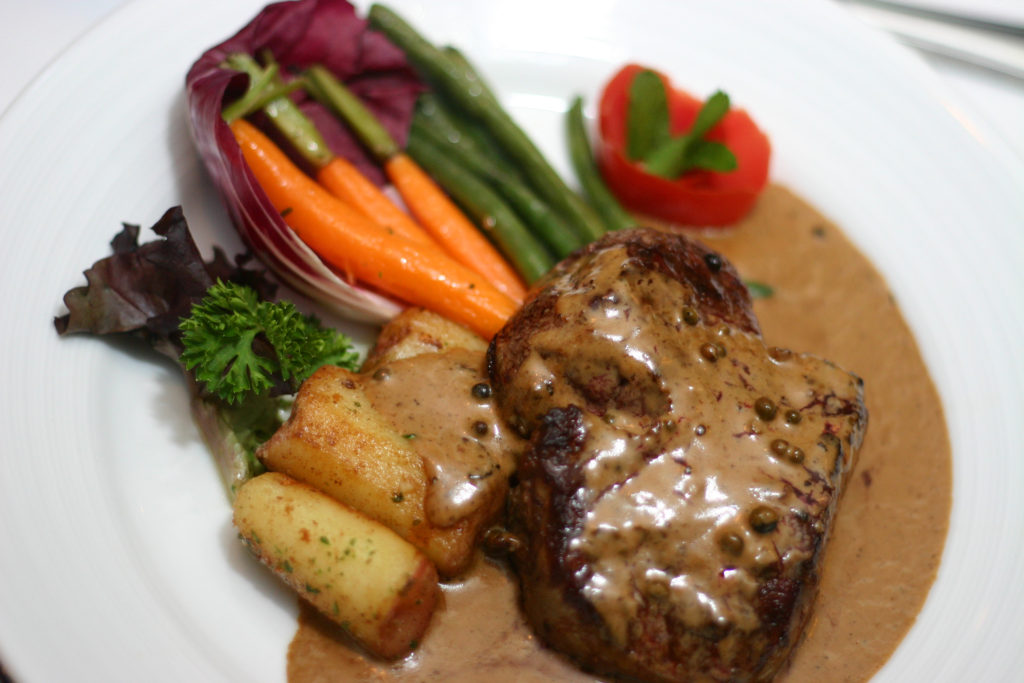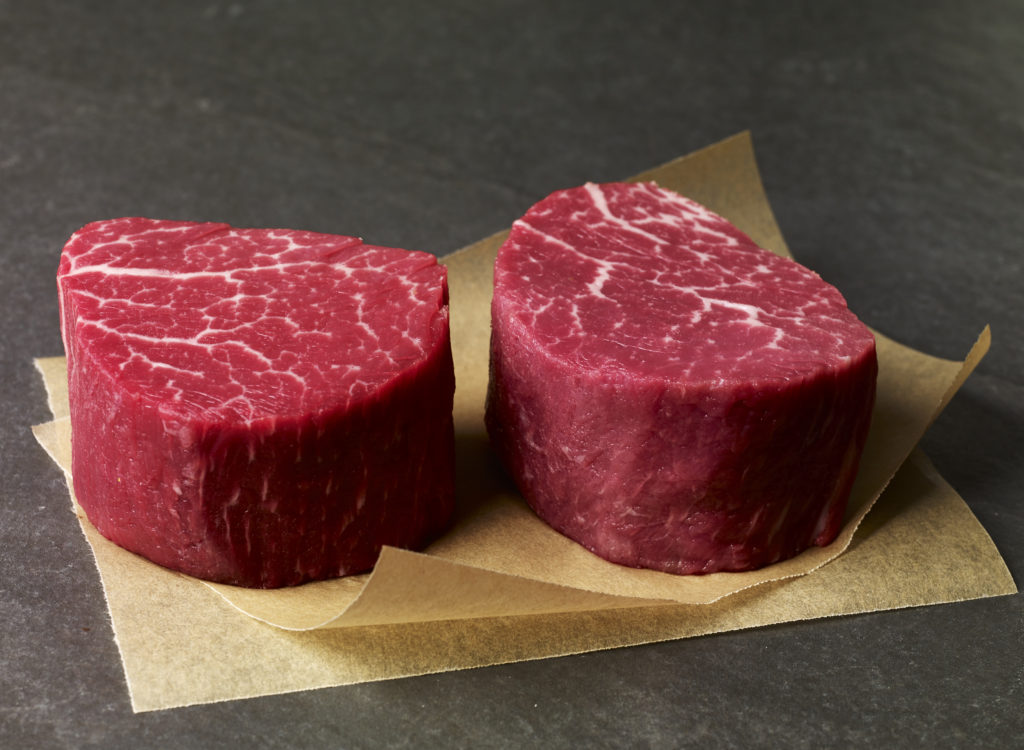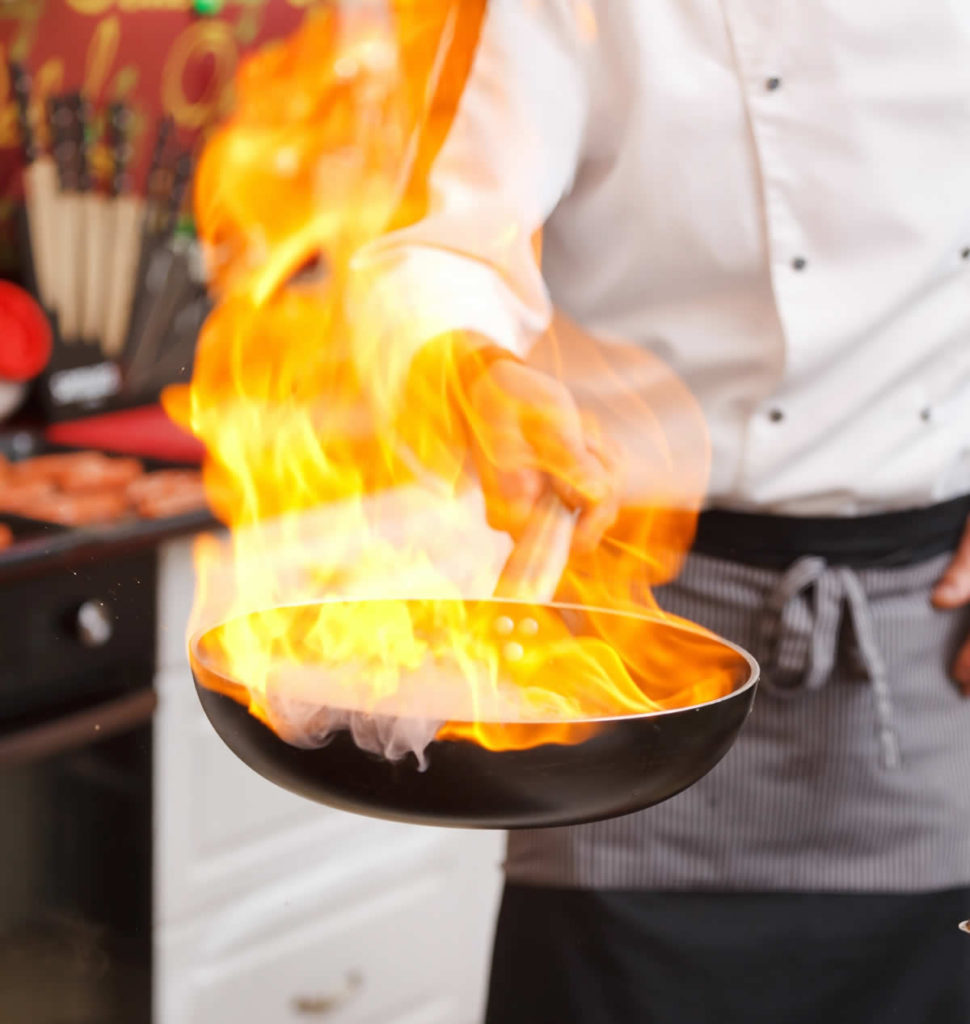Steak au Poivre is a classic sauté dish in which primary flavor component comes from crushed peppercorns that are pressed into the surface of a cut of steak. After the steak is seared and sautéed, it is topped with a flamed cognac-cream pan sauce.

Origins
As with many classic recipes, the origins of Steak au Poivre are varied. In one version, the dish originated in Normandy, France, and was a 19th century bistro staple. It is said to have been a favorite late-night repast in the belief that the peppercorns were aphrodisiacs. In fact, scientific evidence shows that piperine, an alkaloid found in pepper, dilates arteries to increase blood flow to various organs.
Another claim to its invention was made in 1950 by Chef Émile Lerch, who said he first made the recipe in 1930. Lerch said he developed the recipe to add flavor to some steaks he felt lacked in flavor. He also wanted to compensate for late-night diners who had imbibed too heavily. It was a cure for a palate deadened by the consumption of too much alcohol. The pungency of the pepper punches through the richness of the beef and cream sauce.
Preparation
While the original preparation called for filet mignon, you can really use the steak of your preference, including strip and rib steaks.

Probably the main reason Steak au Poivre is seen more at restaurants than at home often relates to the pyrotechnics involved in the classic preparation.
After the steak is sautéed, it is removed from the pan, then cognac is added and ignited before proceeding with making the cream sauce.
Great caution must be taken when flambéing anything because of the inherent flare-up from flaming the cognac in the sauté pan. So to avoid an eyebrow-singeing explosion, pour off any excess fat from the pan, leaving only a residual coating. Take the pan off the heat, pour in the cognac, and light it with a long-handled lighter or match away from your face—never, ever stand over the pan when you ignite the cognac. Swirl the pan gently until the flames subside, or cover with the pan’s lid to extinguish the flames.

Here you can see Alton Brown make Steak au Poivre with filet mignon.
Variations
The easiest way to turn this classic into something uniquely yours is to vary the type of pepper—or peppers—used. Try a mix of black, red, white, and/or green peppercorns. Or try some unique individual types of pepper, including Szechuan or Aleppo pepper.
Here is a variation from the Lobel family using peppercorns and brandy.
And here is a Grilled Steak au Poivre from the Lobels. (Note: This recipe does not include a sauce.)
The same basic recipe technique can be used for cooking lamb, veal or pork chops, chicken breasts, or fish fillets.
Have you ever made Steak au Poivre? What cut of steak did you try? What is your favorite type of pepper to use in this dish?



Leave Your Response